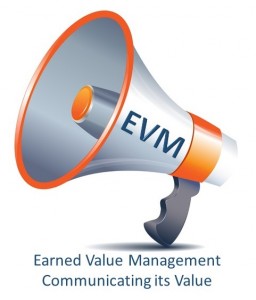Being able to efficiently and effectively diagnose the health of an organization’s portfolio of contracts takes time and persistence. Earned Value Management (EVM), a project management technique for measuring project performance and progress, makes it possible. However, those in the federal sector, including EVM experts, need to do more to communicate its value for increased adoption.
EVM is a novel or complex concept for many stakeholders across the acquisition life cycle process to fully understand, especially technical or non-acquisition personnel, sometimes even within the acquisition and program management communities themselves. However, this lack of understanding is to the detriment of all who have a tremendous stake in the acquisition process, including how to ensure they are getting value for their investments, receiving the capabilities or functionality they’ve paid for, and in a timely way. EVM as a best practice is not only a requirement for many contracts, but a valuable business tool to assess the health of projects, contracts, and portfolios, in addition to enhancing management decisions.
How to help others understand and appreciate the value of EVM is a topic thought leaders at Integrity in “big A” acquisition management have spoken about previously, for example at the 2015 EVM Practitioners’ Forum Training and Symposium, and at Department of Health and Human Services (DHHS) Biomedical Advanced Research and Development Authority (BARDA) Industry Day events. At the presentations, we discuss the role of EVM, and how instrumental it can be in supporting the successful delivery of project and mission outcomes. Also, we talked about how the importance of partnering to establish and use a framework, including policy, consulting, analysis, reporting, training, and tool implementation to communicate EVM-related information to key medical/technical stakeholders (those that don’t speak EVM or project management for that matter) to facilitate contract portfolio management and decision making.
Moving EVM Understanding Beyond DoD
Within the Department of Defense (DoD), EVM understanding and implementation are relatively well established. This is due to many factors, including the evolution of EVM (and its predecessor disciplines) and project management in general, within Defense. However, beyond the DoD, there are challenges in understanding and applying EVM effectively. For example, HHS has a different environment and needs, with a focus on health products and services with life cycle variables that are often significantly different from defense weapon systems. This requires a flexible regulatory environment and involves cultural change through consulting and training to an industrial base that may be less experienced and resourced in project management specialty areas like EVM.
At HHS, our team partnered with our client to establish or move forward policies, procedures, training, and tools to communicate the value of EVM to the department’s acquisition community, including the technical (science) side of operations and the industrial base. Here are seven best practices we have found to be helpful:
- Create implementation guidance that is flexible and specific to your particular environment
- Build close relationships with technical and EVM stakeholders to permit knowledge sharing and communication
- Forego technical jargon. Communicate the importance of EVM using terms, concepts, that are familiar or germane to non-EVM people
- Provide training for many stakeholders (e.g., from executive overview to “deep dive” several day courses and between)
- Provide training specific to audience (e.g., EVM policy for contracting officials, EVM implementation for EVM implementation contractors, oversight and analysis for CORs and people who review EVM reports
- Create Portfolio-level dashboards to identify and communicate systemic or holistic concerns, trends, problems, and solutions between and among divisions, programs, projects, and contracts
- Ensure executive advocacy for the value of EVM to help reinforce outreach and communications efforts focused on communicating shared mission outcomes
This type and scale of change can take time, however, the benefits of communicating and implementing a multi-pronged, incremental approach to Earned Value Management can be substantial. If adapted effectively and suitably, EVM can improve your organization’s ability to diagnose risks and issues sooner, which can lead to forecast more reliable outcomes, and support more timely, and effective decisions.
Contact me if you would like to continue this conversation: mipsaro@integritymc.com
Case Study: EVM Facilitation and Training Improves Real-Time Decision-Making




